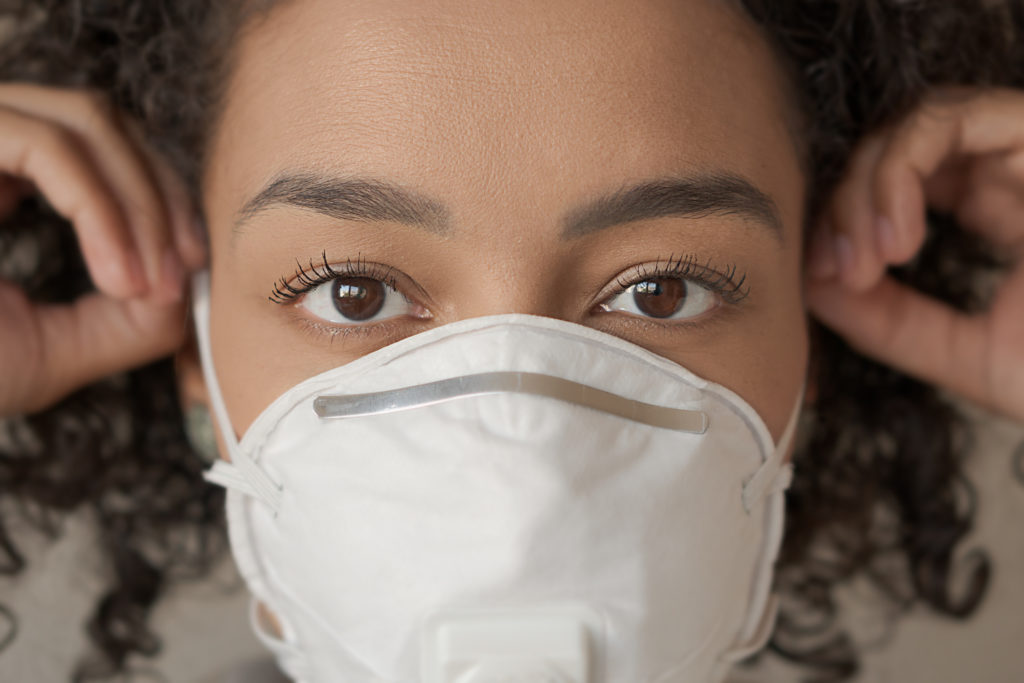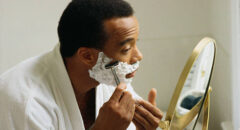
After hearing health recommendations from the CDC about tips and tools to stop the spread of the coronavirus, wearing a mask when going outdoors or being in public has become somewhat of a norm. Mask sales have skyrocketed through the roof and some companies have even changed their business strategy to now begin selling masks to keep up with the demand.
But with all this mask-wearing, more people are beginning to complain about a skin condition nicknamed, "maskne" or "mask acne." Maskne , or it's proper name "acne mechanica," is caused by the combination of rubbing from the mask, which irritates the skin barrier, as well as the hot moisture trapped inside, which dilates the pores and allows bacteria and oil to clog them up. Once the follicles are trapped with dirt and other build-up, they become inflamed, leading to breakouts around your cheek, eyes and nose.
“Acne mechanica comes from friction,” says New York City dermatologist Dendy Engleman, MD to Elle.com. “You irritate the skin, you get clogging of the pores, and then you get sebum and bacteria that proliferate under the skin.” What you'll notice are tiny shallow whiteheads rather than the deep and painful bumps (those are caused by hormones).
Dr. Engleman says it's also all about location, meaning where the bumps break out on your face is also key to figuring out where it comes from. "It wouldn’t be right over the mouth where you’re breathing, but along the chinstrap, over the bridge of the nose, and cheeks," says Engleman. This also applies to medical or paper masks. Another way a cloth mask can cause breakouts is when you don't wash it and the cloth had a build-up of dirt and bacteria.
So what can we do to clear up our beautiful, brown skin? Here are a few tips:
Flip Your Fabric
If you are prone to acne, dermatologists recommend avoiding masks made of fabrics like polyester that tend to trap sweat underneath. Using a mask with an inner layer made from an absorbent material such as cotton can help absorb sweat and is less likely lead to breakouts.
For sensitive skin, avoid fabrics with a rough texture that can cause irritation. If you are making your own masks, skin experts also suggest using a softer fabric for the inner layer of the mask that is against the skin.
Change How You Wash It
It is essential to avoid reusing the same mask to stop the spread of germs, but it can also have an effect on the skin. For reusable fabric masks, skincare experts recommend frequently washing them in hot water after wearing them. Then if that's not enough, try making or having several of the same mask made so you can rotate them. Think of having multiple of your favorite outfit so you can keep wearing it.
Follow Up With A Wash
It might seem like a little bit much, but experts advise you wash your face before and after wearing a mask. When doing it, choose a gentle skin cleanser that is free of harsh sulfates which can strip the skin of its protective oils.
It's also important to massage the cleanser in gently with fingertips only — no loofah or abrasive scrubs. Then you pat dry with a clean towel
Follow up with a lightweight, fragrance-free moisturizer with ingredients like glycerin and niacinamide that help strengthen the skin barrier.










